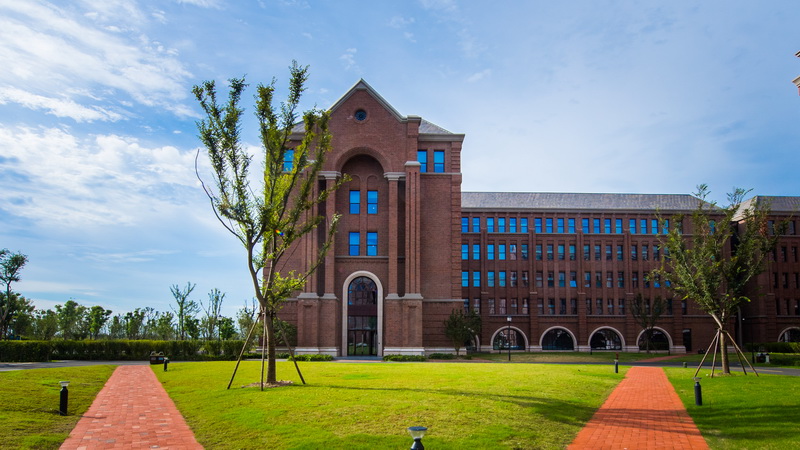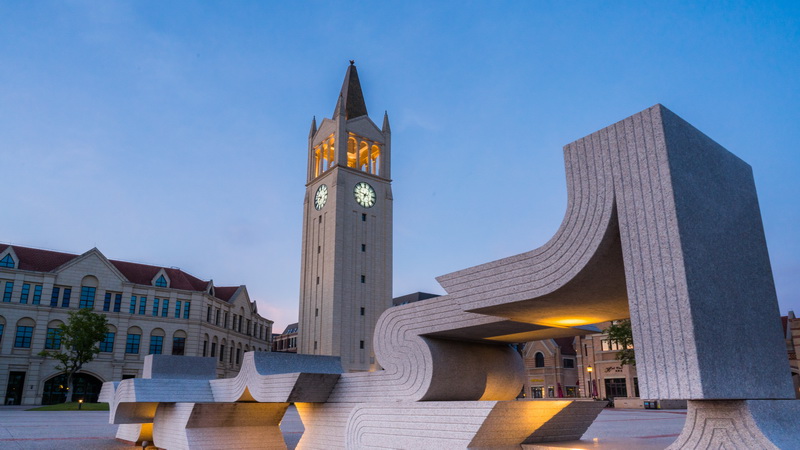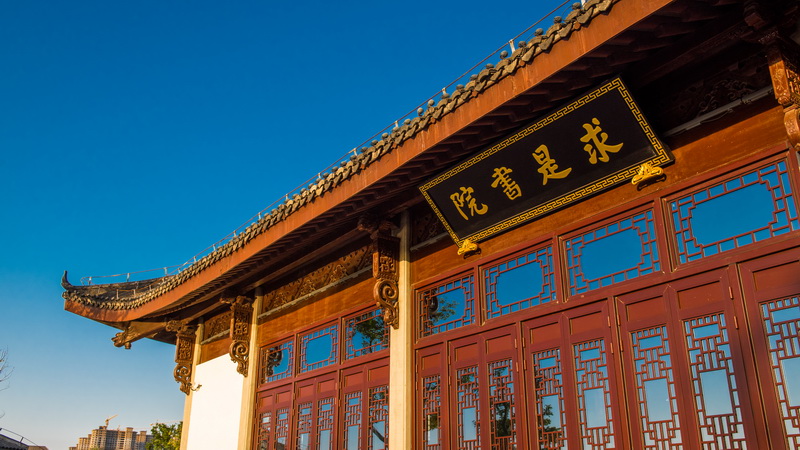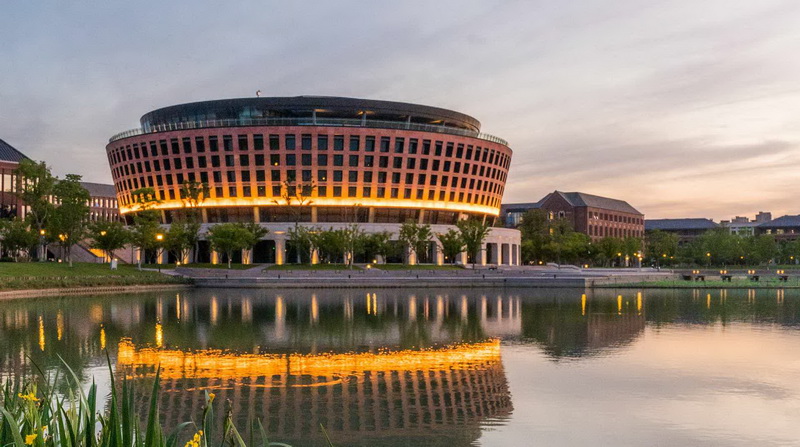Editor's note
Water is life. March 22, 2023 marks the 31st World Water Day, with the theme of "Accelerating Change".
Haining International Campus is an important part of Zhejiang University sustainable campus construction. As early as the initial planning, it has established the concept of sustainable development of campus, and overall considered the campus location, green transportation, renewable energy, low impact rain flood management, and the application of green building key technology and other strategies, as well as integrated the concept of sustainable and green technology into the education internationalization space.
Sponge Campus
Haining lnternational Campus covers large space and is rich in water resources, so it is of significance to intersperse the concept of sponge cities into the whole campus in design.
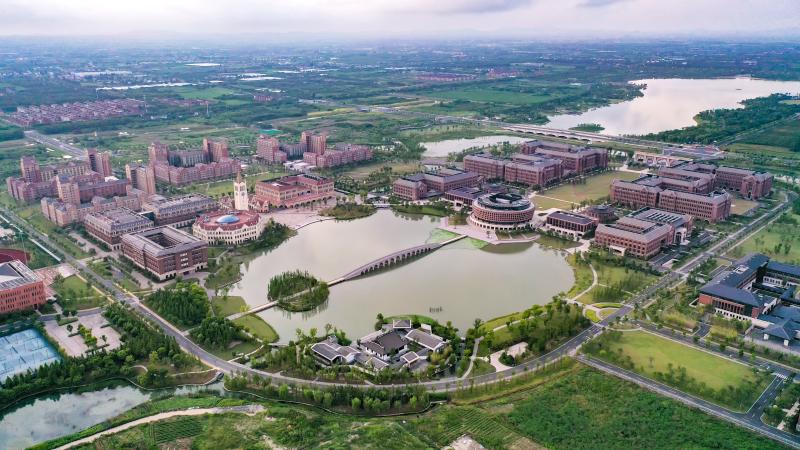
Sponge cities, refer to the idea that cities can be like sponges with good flexibility in adapting to environmental changes and responsing to natural disasters. Cities absorb, store, infiltrate and purify water on rainy days and release the water to be used when necessary. The construction of sponge cities follows the principle of ecological priority and combines natural ways with artificial measures to maximize the accumulation, infiltration and purification of rainwater in urban areas under the premise of ensuring the safety of urban drainage, prevent waterlogging, and promote the utilization of rainwater resources and ecological environment protection.
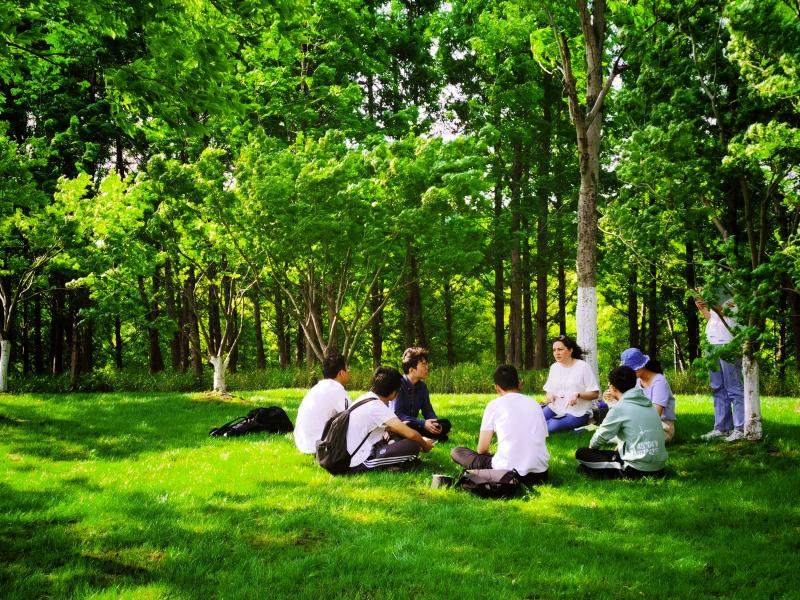
The design of sponge campus includes the use of water permeable paving, biolags, bio-retention green bands and the depression of green space, the control of water drainage capacity, rainwater collection system, and the use of non-traditional water sources.
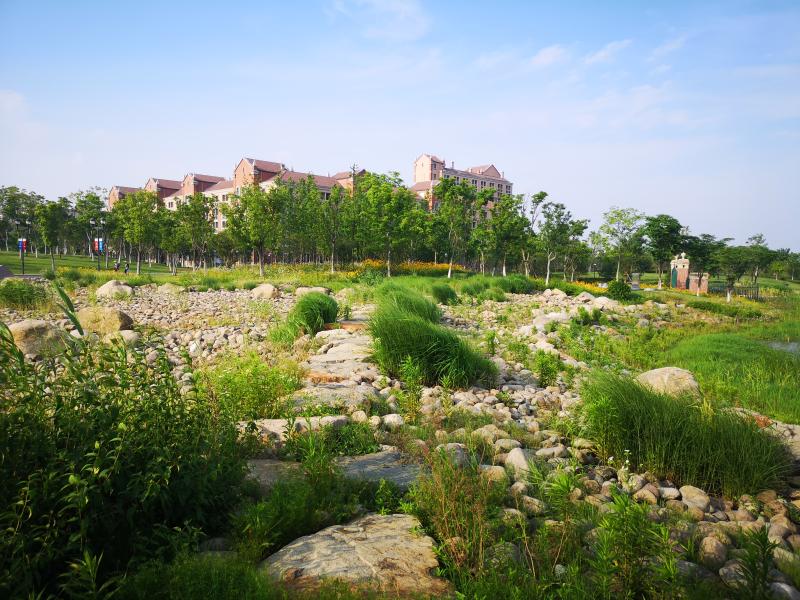
Water permeable paving refers to the idea that rainwater can permeate and penetrate directly into roadbed artificial pavement, which requires the water permeability of pavement floors, combination layers and bases. Water permeable paving includes permeable asphalt, permeable cement concrete, ecological permeable bricks and some special permeable paving, such as pebble paving, embedded grass paving and wood paving. A large-area paving in landscape design and a large-scale application of water-permeable concrete and bricks are applied on the International Campus. By setting the permeable pavement, rainwater can penetrate through the pavement materials to the ground and replenish underground water.
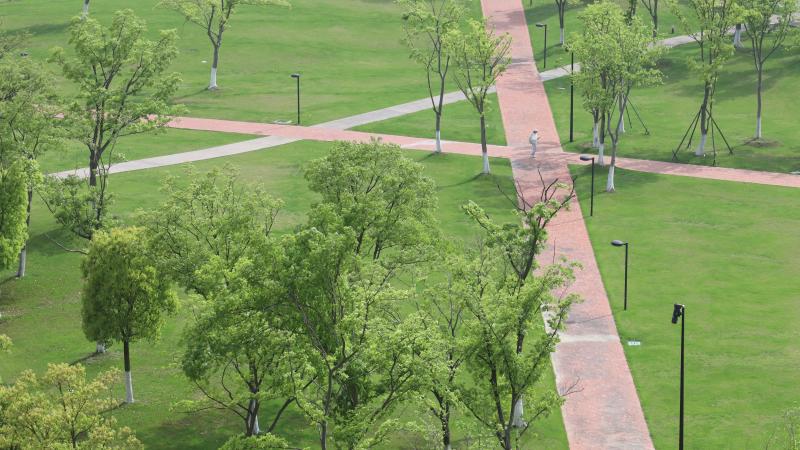
Biolags are a special kind of engineering facility with plants in lower-lying areas, which purifies rainwater through soil and plant filtration, reduces pollution andabsorbs the initial rainwater in small areas to reduce runoff. The biolags are put at the isolation belts between the main-loop road and pavements, and the gutter inlets are put every 30 meters. When it rains, rainwater first enters the biolags and infiltrates into the soil. When the soil is saturated, rainwater enters gutter inlets and finally to the municipal rainwater system. Vertical slopes higher than road elevation are built at the green space along the roads, so concave green belts are formed inside the roads to prevent the rainwater on the campus from flowing into rivers on the east and west.
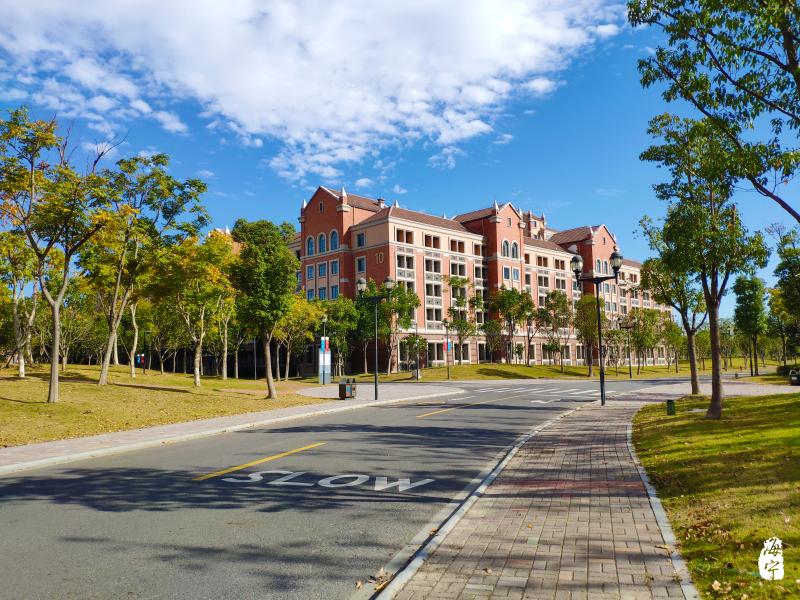
The Central Lake, covering an area of about 68,000 m², on the campus with an area of about 600,000 m², is a major area for rainwater storage, and the level elevation is usually at 2.7 m. Land runoff coefficient is calculated at 0.65, which means that water stored at every 0.44 m can alleviate the rainstorm of 50 mm on the campus. The internal water level is controlled flexibly by two sluice gates and pumpingstations on the north and south, to reduce peak discharge, prevent waterlogging and reduce external pollutant load. When the water level on the campus is high, rainwater is discharged from the north water gate. When self-draining is not adequate in an over-intensity rainfall, the waterlogging pump station at the northwater gate will discharge the rainwater in enhanced drainage to the wetland on the north. And finally after the pre-treatment of the wetland, it empties into the Juan Lake through urban rivers on both sides. Meanwhile, to ensure the quality ofthe landscape water system and the stability of water temperature, a water changing system is designed at the sluice gates.
Rainwater is collected to the lake and then pumped to the basement water collection machine room in the East-of-Lake Complex, and finally it is used, after purification, for flushing the toilets in the northern teaching area and for outdool greening irrigation or flushing roads. lt is calculated that the utilization of non-traditional water source through the rainwater collection system can reach 15%.
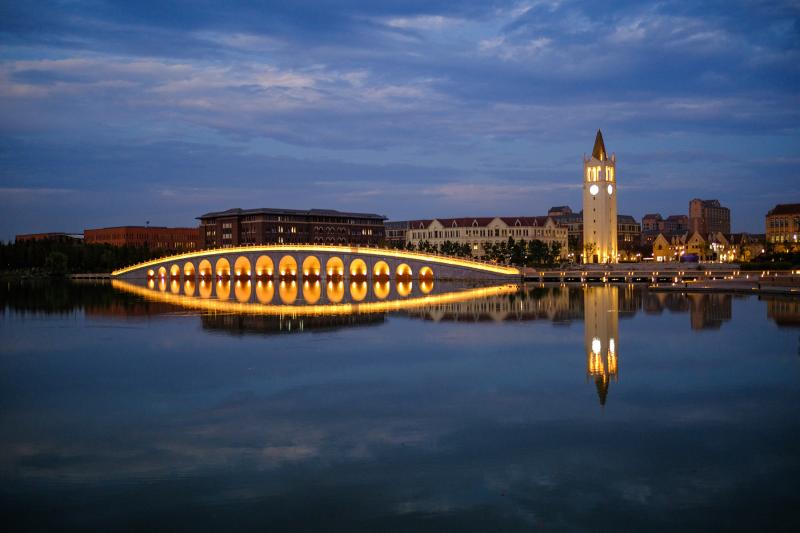
TAKE ACTION

Contribute to the Water Action Agenda
(Article: The Unity of Knowledge and Action-The Desigh and Construction of Zhejiang University International College (Haining International Campus); Photography: UN-Water, YANG Lichao, GAO Erxin, LI Jie, LU Qiang, WANG Jie, WU Lanqi, ZHANG Zhenhao; Editor: Sun Xiaolei; Managing Editor: XUE Qian


